TRENDING
The Rarest Diseases Known to Man
Published
3 years agoon
Medically, human beings can be very complex. Our biologies are all unique, and over time as we evolve, we discover new conditions and find cures to those we once thought were impossible. But there are a small percentage of medical conditions so rare, even doctors have been stumped by them for decades.

These conditions aren’t mitigated with your normal surgery or cancer treatment either. They’re often physiological, non-genetic, and oftentimes auto-immune. They can be caused by natural or scientific factors, be deadly or just visual, and usually cause some sort of discomfort, whether physically or visually for the diseased. Here are the most rare diseases known to man today…
Water Allergy

Being allergic to water sounds like something so unfathomable, many of us could not even cope with the idea of not being able to tolerate water in any form, even your own tears. However that’s reality for those with Aquagenic Urticaria, which basically means you develop a type of rash when in contact with any type of water. It’s extremely rare, and has only about 100 diagnoses.
Hutchinson-Gilford Progeria Syndrome (HGPS)

Progeria, as it’s called in its simpler form, is also known as the “Benjamin Button” disease due to its pop-culture relevance from the movie. The disease is caused when just a single LMNA gene develops abnormally and makes a protein causing the individual to age rapidly. It affects about 1 out of every 4 million people born, with no particular instigating factors. Age is usually short-lived for these individuals.
Eagle Syndrome
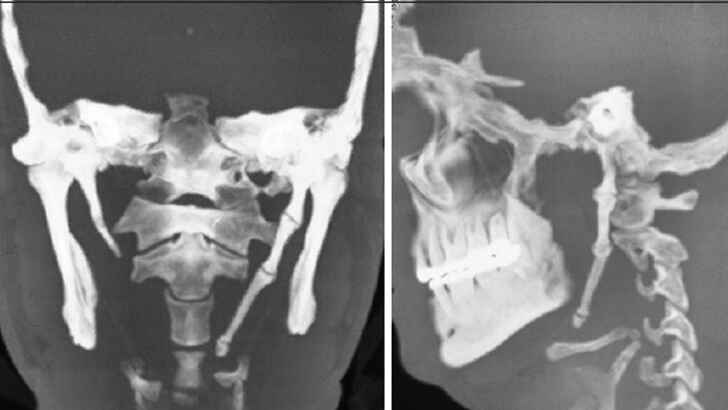
Eagle syndrome is actually a condition where the throat is swelled up or inhibited from breathing and swallowing properly, and can affect the oropharynx after a tonsillectomy or something of similar nature. A second version of the disease involves an elongated styloid process, which basically means the tongue and larynx have difficulty communicating and working efficiently.
Black Hairy Tongue
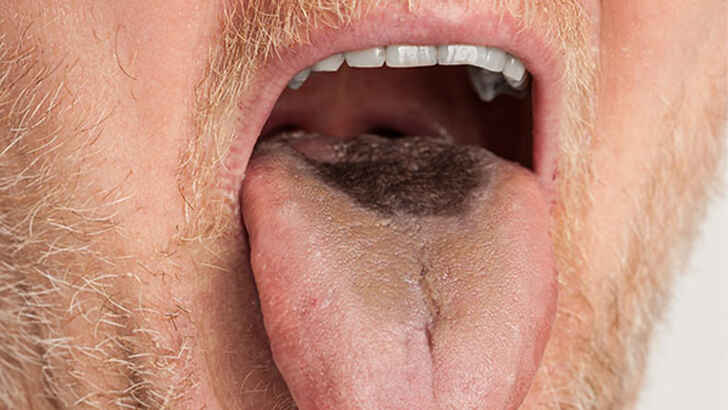
Black hairy tongue is just one of those things that when you hear, you’re immediately repulsed and wondering how something like that can even happen. However, it is both a harmless and painless issue, and illusionary in nature. It’s usually a build-up of skin cells on top of the taste buds that catch substances because they didn’t die. Luckily it is treatable.
ACDC

Unfortunately, this disease does not rock because it stands for arterial calcification due to deficiency, and is an adult-onset condition that causes calcium to become overgrown in joints that can also lead to progressive pain in other parts of the body. It stems from a mutation in the NT5E gene.
Stiff Person Syndrome
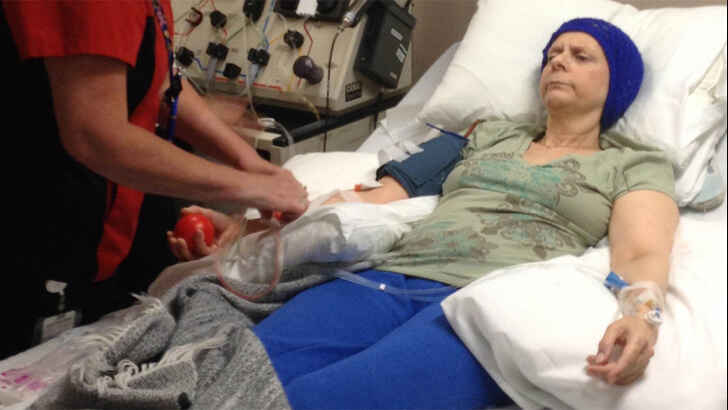
Stiff-person syndrome is both a neurological disorder as well as an autoimmune disease that’s essentially rooted in muscle rigidity in your limbs. This is often backed up by heightened sensitivity, which results in muscle spasms and other discomfort. People may experience disabled movement, abnormal postures, and struggle to operate in a busy environment due to a misconnection in their brain or spinal cord.
Wilson’s Disease

Wilson’s disease is an inherited disorder that evolves in a rare form of copper build-up, which is normally processed by your liver. In this case, the copper levels become life-threatening unless treated, which thankfully is now the common result. Copper is crucial in the development of your nerves, bones, collagen and more, so staying ahead of Wilson’s disease is crucial for your health.
Situs Inversus
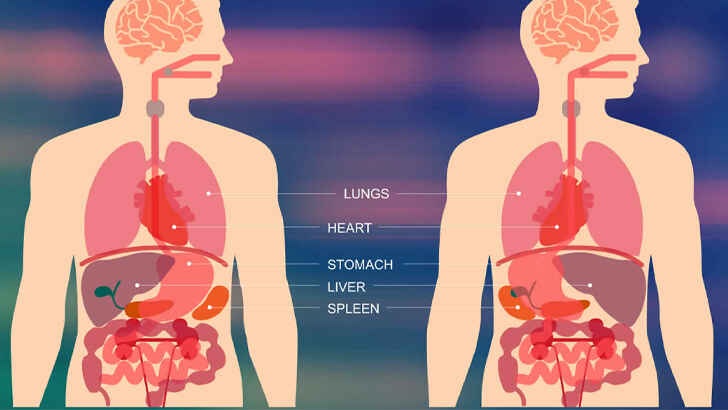
The peculiar case of Situs Inversus is something out of the ordinary DNA strain, because what happens is your organs arrange themselves on the opposite side of your body. This can come with no side effects at all, or cause congenital heart defects or other complex issues that are more or less addressed on a case by case basis.
Carcinoid Syndrome

Carcinoid syndrome is a very rare type of cancerous tumor that occurs in the neuroendocrine portion of the bloodstream, and is most commonly found in the lungs or gastrointestinal tract. Typically, it takes an advanced form of the tumor to actually form into carcinoid syndrome, but for now, the only known way to treat it is through typical cancer treatment, as well as pain-relieving medications.
Foreign Accent Syndrome
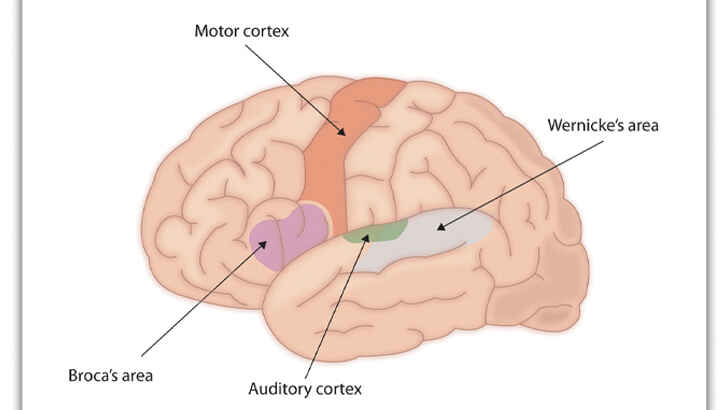
Foreign accent syndrome sounds crazy, because it is. Due to a pre-existing brain trauma or stroke, a patient suffering from FAS will unknowingly begin talking in an accent that wouldn’t be their normal speaking voice, and sounds “foreign”. This has to do with a different maneuvering of the tongue and lips, with your expected speech errors with grammar and so on. Patients speak native languages in seemingly foreign dictations, such as Spanish to Hungarian.
Ochoa Syndrome

Ochoa syndrome is an extremely rare autosomal recessive disease, which means it requires two carriers to each pass down an affected, mutated gene. Unfortunately, the sufferers of this syndrome are known to have an inverted facial expression when they try to smile or laugh, which makes them look like they’re frowning strongly. It also causes serious urinary and bowel troubles, which can often specifically hurt the kidneys most.
Gigantism

Gigantism is exactly what it sounds like – an incredibly rare growth hormone disease that causes a person to grow abnormally tall. This stems from a tumor occurring in your pituitary gland, which essentially just overproduces the growth hormone while in an adolescent state. Luckily, it is treatable and can stifle the overgrowth of bones, which have been known to leave some people over 8 ft. tall when left untreated.
Alice In Wonderland Disease

Alice in Wonderland disease is aptly named after the famous Lewis Carrol novel, because those who experience it feel distorted visual perception, including the size and appearance of normal objects and people, as well as a disorientation of the concept of time (much like the book’s narrative). It is a neurological disorder, and can occur in adolescents, but more serious symptoms were observed in the elderly.
Morgellons

Morgellons disease is still relatively unexplained, as it’s characterized by the feeling that one feels as though parasites or spikes are emerging from your skin. The sores and itchiness can be extremely unbearable to the persons, and the crawling and piercing sensations aren’t noticed even by some doctors. It is sometimes treated with antidepressants and therapy, while more research is still being done to see if there’s any infectious process in the production of skin cells.
Fibrodysplasia Ossificans Progressiva (FOP)
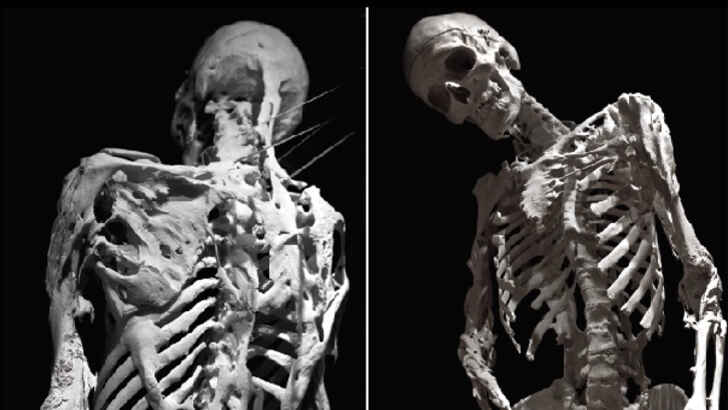
Also more commonly referred to as Stoneman’s Disease, FOP is the rare genetic disorder that leads soft tissue to transform into bones that grow alongside other connective tissue, meaning that extra bones overtake the joint, often making movement in that area of the body very difficult. It can occur in all joints, and the telltale sign comes at birth with a disformed big toe. It affects about 2,500 people worldwide, and is usually a mutation even though it’s autosomal dominant.
Fragile X Syndrome

Fragile X syndrome is a genetic disorder that occurs when a person’s body fails to produce the normal FMR1 gene, which makes a crucial protein in brain development. Those with fragile x fail to get this protein, leading to delayed development, learning disabilities, and behavioral abnormalities. Oftentimes it affects males more severely than females, and can range in cases from mild to severe.
Tongue Tentacles
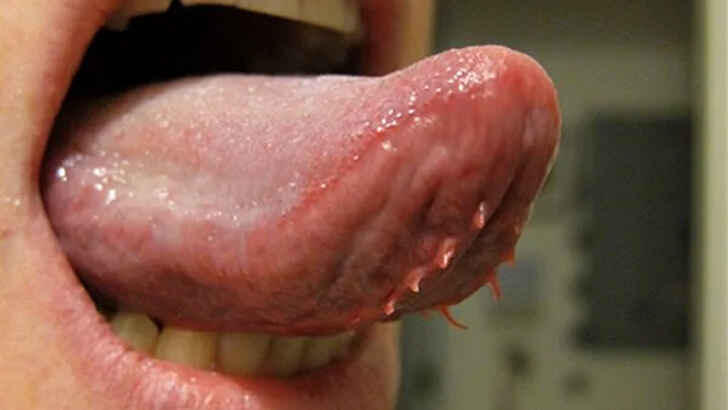
Fimbriated tongues are caused by a fold in the mucous membrane that occurs on each side of your frenulum, which are on the underside of your tongue. In rare instances, a fringe-like extension of the tongue’s flaps grow to almost 1 cm, usually in a triangular shape, giving it a sharp look. Since it’s just normal residual tissue, it’s actually not harmful or impactful for those who have always been used to it.
Human Werewolf Syndrome

Its clinical term is Hypertrichosis, but human werewolf syndrome makes a lot more sense due to the extreme hair growth that grows on the patient’s body. It’s not limited to just men, and can cover anywhere from head to toe, in both small and big patches. While extremely rare, it can occur at any stage of life, and there are separate forms of the disease that affect those with it differently.
Methemoglobinemia

The key factor causing methemoglobinemia is that too little oxygen is being transmitted through the cells, and this is due to the fact that the natural hemoglobin that normally distributes oxygen isn’t doing so. In turn, the methemoglobin overtakes the normal hemoglobin, and the lack of oxygen causes those suffering to appear to have blue skin, which is known as cyanosis.
Uncombable Hair Syndrome

Uncombable hair syndrome is an extremely rare condition that’s exactly what it sounds like. It develops as early as infancy and usually before age 3, but can develop as late as 12. There’s only 100-ever confirmed cases, and it is characterized by highly frizzy, matted, and dry hair that cannot be combed flat. It occurs only on the scalp, and grows in every direction. It can improve over time, but usually causes discomfort for the individual growing up.
Albinism
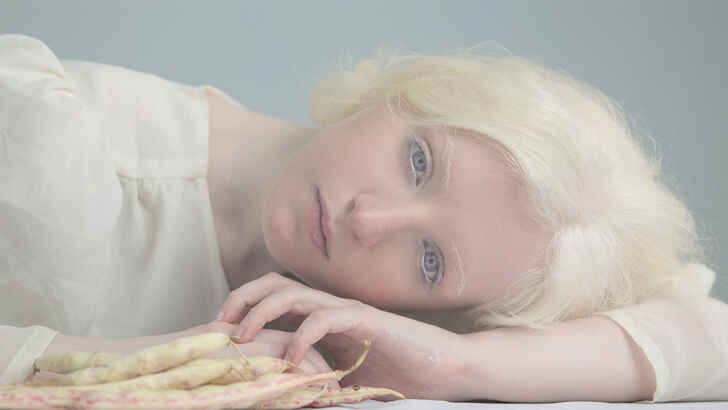
Albinism is one of the more well-known rare diseases, and that’s usually because it’s not as deadly, and more often polarizing. The condition is due to a lack of melanin, or its complete absence, and usually affects the skin, hair, and eyes. Those with albinism’s biggest concern is eyesight, as well as the heightened sensitivity to sun. The reason it’s so prominent in the eyes is because melanin helps develop your retina.
Polydactyly
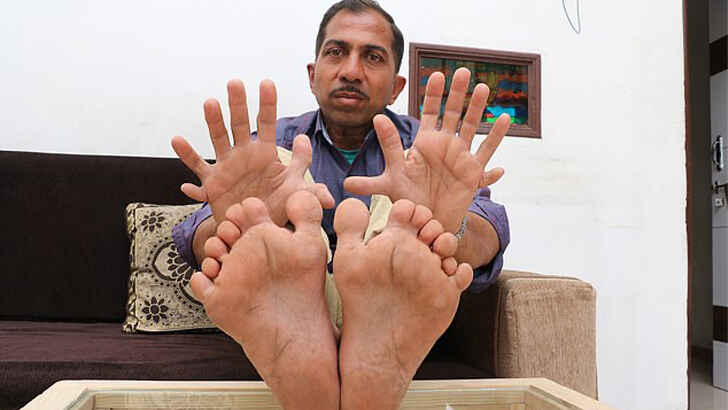
The cases of those with extra digits on either their hands or feet is called a polydactyly, which translates to “many digits” in Greek. Usually these cases are hereditary, but they can also stem from genetic mutation or environmental disaster. You can elect to have surgery, but some cases are obviously more complex than others and hands are more commonly affected in comparison to feet. Men also experience this at about twice the rate, despite it being 1 in 1,000 births.
Raynaud Syndrome

Raynaud’s syndrome is almost something of a phenomenon, as it tends to occur in those already living in cold climates, and more often in women than men. It’s a disease that sees smaller arteries either leading to fingers or toes narrow, limiting the amount of blood supply in those areas, subsequently making them numb and cold. Swelling and stinging pains can also occur, and it can take about 15 minutes until blood flow returns.
Persistent Pupillary Membrane
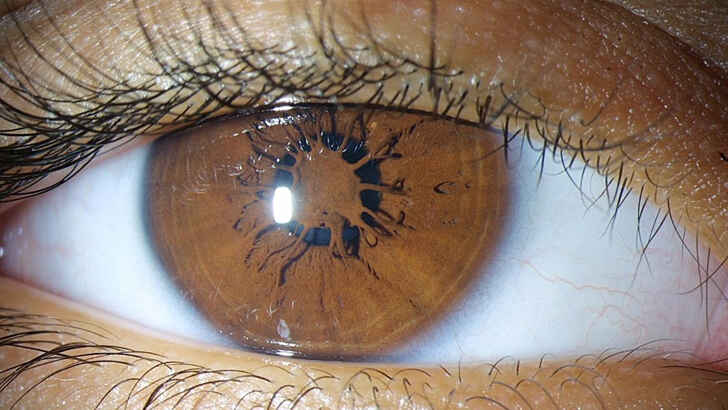
Persistent pupillary membrane is thankfully a medical anomaly that’s essentially unproblematic for those who have it. Basically it means that not enough of the liquid in the iris regressed during gestation, so strands of connective tissue are still in the membrane. They usually don’t affect vision unless in extreme circumstances. Oftentimes, surgery can combat this in the first months of life.
Genu Recurvatum

Genu recurvatem can be somewhat misleading, because while it’s also the term for a common hyperextension, the specific case that’s debilitating is when your literal bones in your knee are facing the wrong way, or are genetically out of shape and alignment in some way. It can also lead to muscle weakness, as it’s usually a trait of ligamentous laxity, or the hereditary joint deformity gene.
Dermatographism
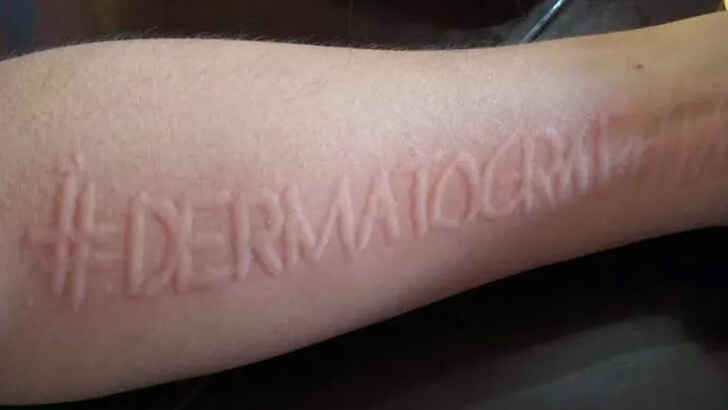
People who suffer from dermatographia have a skin sensitivity that when scratched, leaves a red, raised pattern that stays for about 30 minutes. This means those with the disease can write, draw, and will have the scratches on their skin for some time. It’s original cause is unknown, but it’s believed to be derived from allergies or emotional discomfort, and is treated with things like
Zyrtec and Benadryl.
Piebaldism

Piebaldism is another condition that deals directly with pigmentation and melanin, specifically cells called melanocytes, which are those cells responsible for contributing to hair, eye, and skin color. When these melanocytes are missing, a portion of the hair will usually feature a lighter patch of coloring, which 90% of the time is a white area near the front of their hairline.
Chimerism

Chimerism is an extremely rare condition that means that a human has in one way or another, actually acquired two sets of DNA. This is possible through pregnancy, where a woman or fetus absorbs cells from the other, a blood transfusion, in twins who lose an embryo, and cell-crossing processes. The main teller that someone has chimerism is dual-pigmentation, meaning they may have skin discoloration, different colored eyes, or some other autosomal issues.
Coloboma
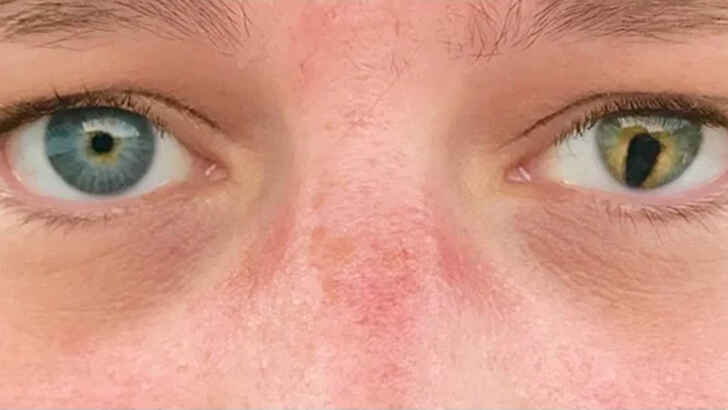
Those who suffer from coloboma are actually missing a portion of the tissue in their eye, which makes them potentially impaired, or extremely vulnerable to light. It’s usually diagnosed at birth, and is treated more effectively when addressed early. It can occur in just one, or potentially both eyes, but can also feature different symptoms for different people, which include but aren’t limited to affecting the iris, retina, lens, and optic nerve.
Preauricular Pit
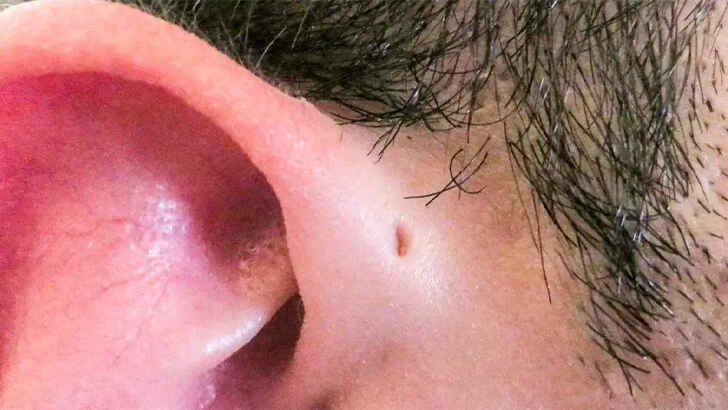
Preauricular pits are basically a misplaced sinus tract that’s marked by a tiny opening in this tract that’s located either about the ear canal or lower by the lobe in more unique cases. It’s usually only going to occur in one of the ears, and usually occurs during the gestation period when an ear forms incorrectly. Usually they’re not chronic or painful, but they can be an early sign of other infections to come. No hearing impairments occur, but other abnormalities will be tested for.
Dropped Head Syndrome

DHS is a pretty scary disease that is formed through intense kyphotic deformity in the cervico-thoracic part of the spine. It’s pretty rare, and is primarily neurological, muscular, or a combination of both. It basically means a patient cannot support their head’s weight on their neck. Surgical intervention is still highly debated, despite the effect of the condition on one’s quality of life. It can be heavily debilitating, and cause obvious physical difficulties.
Vitiligo

Vitiligo is one of the more well-known rare diseases because today there are even models who have the condition, and are positively celebrated for it. It’s yet another skin-related condition which has to do with lack of melanin production, and in this case those cells die and don’t produce the normal pigmentation. It occurs in all skin types, but is more noticeable in many cases for those with darker complexions.
Proteus

Proteus syndrome is a peculiar case of overgrowth that happens in one’s bones, skin, or tissue, causing that segment of the body to grow out of proportion in accordance with the rest of your body. Anything from your skull to limbs and even your skin can be disproportionately affected. This is usually because connective tissue is inflamed, and the physical ramifications can be dire, leading to detrimental impairments and permanent, abnormal physical features.
Kuru

The source of the incredibly rare disease known as Kuru is that an infected protein is taking over brain tissue, and is actually sourced from a form of cannibalism in New Guinea that saw people eating remains of brains as a funeral ritual. Though that practice ended in 1960, cases have been reported for the ensuing years because of its long incubation period, and symptoms are similar to those in mad cow disease.
Microcephaly
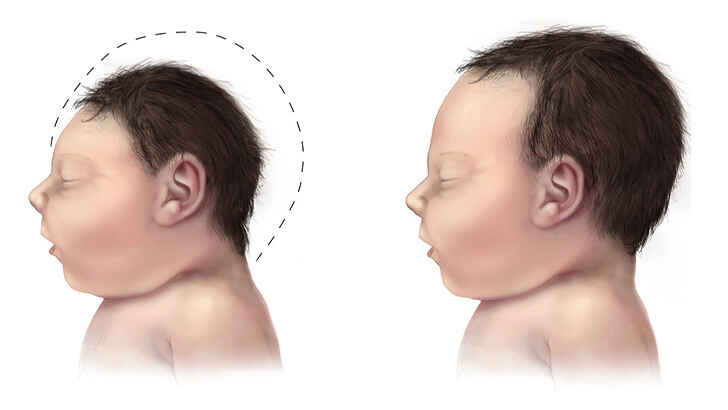
Microcephaly is a tragic disease that affects newborns who were born with smaller heads than expected, leading them to have insufficient brain development. Because the brain doesn’t grow, the head doesn’t enlarge, and whether or not there’s additional problems, this process is certain to cause developmental issues and certain physical disabilities, or even seizures and ongoing life disruptions like hearing loss or vision issues.
Parry–Romberg Syndrome

In this quite uncommon facial disease, the body’s atrophic disorder causes soft tissue and skin to deteriorate in the face, usually on the left side. It is also more common in females, and is generally a progressive condition, meaning it gets worse over time. The most common symptom that accompanies this diagnosis is seizures, though other neurological issues have been spotted.
Epidermodysplasia Verruciformis
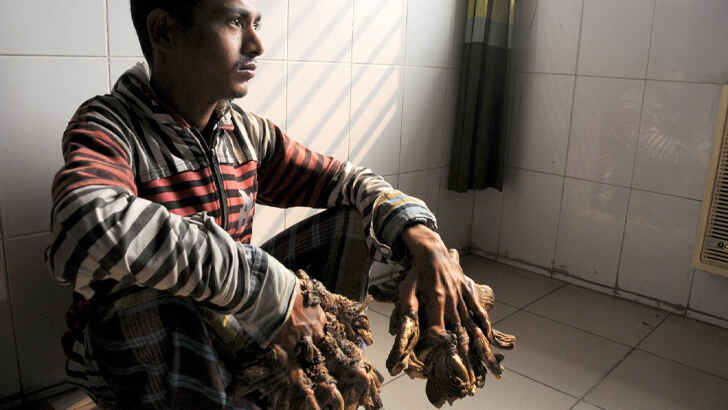
Commonly referred to as EV, or “Tree man Syndrome,” this bizarre disease is an incredibly rare skin condition that’s another autosomal recessive hereditary diagnosis associated with skin cancer. It deals mainly with a human papillomavirus of the skin, which causes scaly or bark-looking growth on mainly the hands and feet. It’s usually diagnosable before the age of 20.
RPI Deficiency
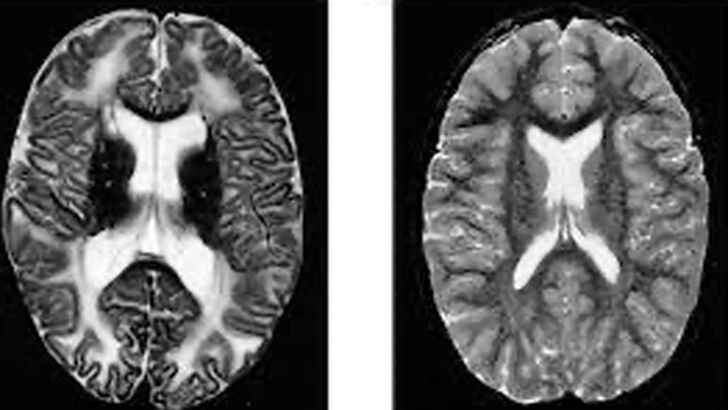
Believe it or not, RPI deficiency is the second most rare disease in the world, with only 4 cases ever known. It deals with genetic mutations in the ribose-5-phosphate isomerase, which is an enzyme in your pentose phosphate pathway. Basically a particular gene isn’t communicating with its respective cells, and is either providing a toxic counterpart, or not completing the RNA process. Either way, the RPI activity is affected.
Fields’ Disease

Fields’ disease is actually the number one most rare disease out there that we know of, and it’s actually named for the pair of twin sisters, Catherine and Kristie, who were surprisingly born with the disease for the first time. It’s a neuromuscular disease, meaning it causes macular degeneration, and issues with nerves result in involuntary muscle movement. For this reason, the twins are confined to wheelchairs.
Porphyria

The disorder known as porphyria occurs when there’s a buildup of natural chemicals known as porphyrins in your body. Since their main duty is to assist in the hemoglobin’s functions, such as binding iron or distributing oxygen, high numbers of porphyrins in your body can cause both nervous system or skin symptoms. Though they vary widely, there are forms of treatment.
Pica

Perhaps one of the most perplexing diseases in this list is pica, which is a mental disorder that forces people to compulsively swallow items that are not intended to be edible. It tends to be common among smaller children, which obviously makes it dangerous. However, it can persist into later life if not addressed and treated, usually with therapy and lifestyle monitoring.
Moebius Syndrome

Moebius syndrome is also referred to as frozen face syndrome, as the rare congenital facial paralysis means that nerves that control the eye, facial expressions, and other muscles are not underdeveloped, or not present. In turn, this affects speech, chewing, and swallowing, which can make quality of life difficult. Treatment is possible, but depending on the severity of the case, there could be lifelong physical and psychological impairments.
Auto-Brewery Syndrome

An extremely strange disease known as auto brewery syndrome is a gut fermentation issue that causes those suffering from it to feel drunk despite not consuming any alcohol. What happens is that endogenous ethanol fermentation turns sugars and starch into alcohol, meaning carbs can unknowingly make the patient impaired until diagnosis reveals what’s causing the situation to occur, which can be difficult to diagnose.
Walking Corpse Syndrome

Also known by its clinical name of Cotard’s syndrome, walking corpse syndrome is basically an extremely rare mental disorder that leads a person to believe they are somehow dead, and nothing about them physically exists. It’s usually paired with previous brain trauma or strokes, comas, and other debilitating brain injuries. Often these people fail to take care of themselves, mainly eating, but this disease can be treated with therapy and close monitoring of lifestyle.
Congenital Insensitivity to Pain

While it’s hard to believe, this disease is exactly what it sounds like. Patients with congenital insensitivity to pain literally do not feel levels of physical pain whatsoever, but they can detect sharp versus dull, or hot versus cold. However, not knowing limits or feeling pain can lead to numerous instances where severe injuries may not be treated, causing prolonged health conditions. Sufferers also experience loss of smell, as it’s affecting the peripheral nervous system.
Parasitic Twin
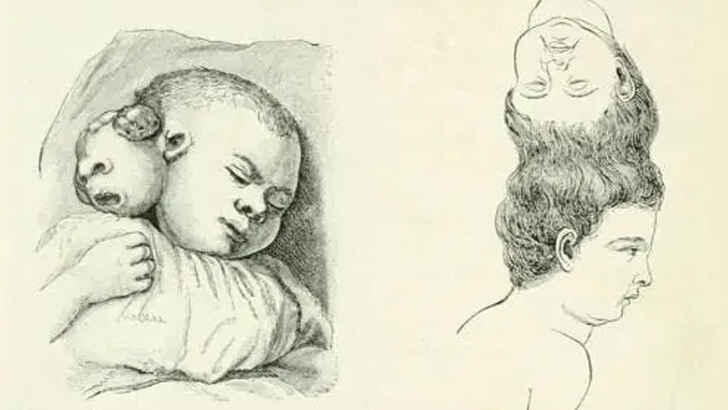
The case of a parasitic twin is not only rare, but extremely difficult for both the mother and the surviving child. It means that one of the twins didn’t make it through development, but still has limbs, organs, or tissue that is attached to the remaining fetus, since it usually happens early in embryonic development. The surviving twin is then susceptible to lifelong complications, which obviously include unique cases of physical and mental setbacks.
Alkaptonuria
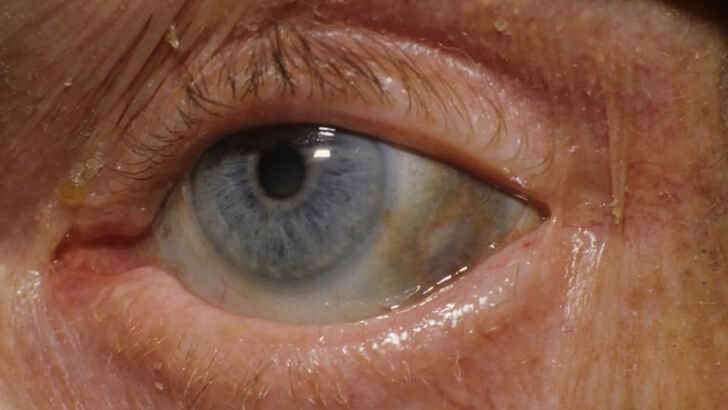
The condition of alkaptonuria is not a fun one, and if not detected early, can cause major problems into adulthood. It occurs when the body’s enzymes fail to break down amino acids, resulting in a build-up of a chemical called homogentisic, which leads to acid build up and can begin to cause urine to turn black. Over time, it affects bones, tissues, and a number of other areas that cause a variety of health complications.
Persistent Genital Arousal Disorder

One of the most tortuous of all diseases is one that specifically affects women, and that’s persistent genital arousal disorder. It means a woman experiences spontaneous and unwanted sexual arousal that’s not stimulated by desire or intercourse of any kind, and cannot be cured by orgasm. It can last hours, be extremely invasive and inconveniencing, and ultimately cause an array of mental and psychological trauma to those suffering.
Chronic Focal Encephalitis (Rasmussen’s Encephalitis)

Chronic focal encephalitis is an inflammatory brain disease which unfortunately causes the body to fight against its own immune system. Sometimes, this leads to a portion of the brain needing to be removed in surgery, often at a young age. The inflammation worsens over time, particularly in the cerebral hemisphere, which leads to chronic seizures and epileptic activity. While it usually peaks and wears off over time, it still leaves the diseased with brain damage.
Fatal Familial Insomnia

Fatal familial insomnia occurs when an abnormal variant of the PRNP gene exists, which is responsible for creating the prion protein. When these proteins are lost, it affects the autonomic nervous system, which in this case means the diseased have trouble sleeping, and continue to experience worsening symptoms over time. This obviously leads to extreme mental and physical deterioration, as well as disconnection with the normal automatic body processes.
More From Auto Overload
-


Celebs Before They Became Famous
-


Dubai’s Most Extravagant Attractions
-


Best Weight Loss Transformations In Hollywood
-


Historical Photos From The Groovy Era
-


The Greatest Bands of All Time – Ranked
-


Vintage Photographs Of Old Las Vegas
-


Celebrities Who Came From Nothing
-


Shortest Celebrity Marriages Ever
-


Best Marvel Universe Characters
-


Clever Marketing Gimmicks That Tricked Consumers
-


31 Greatest QBs of All Time – Ranked
-


Fascinating Photos of Historical Figures

